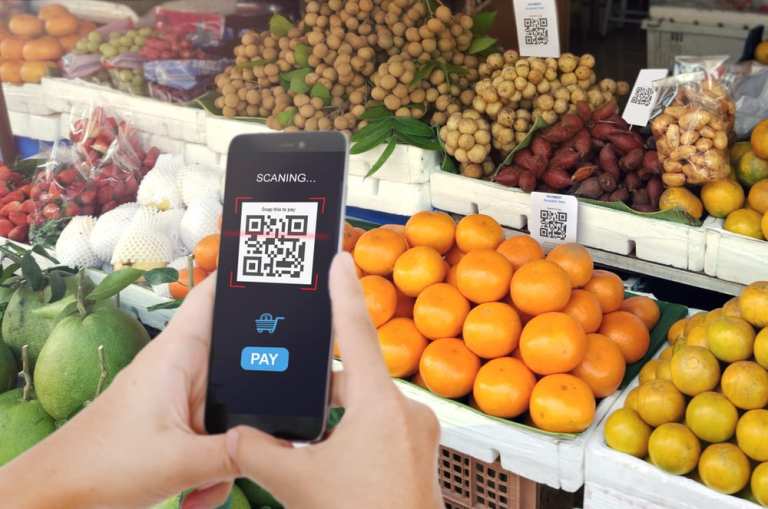We mostly have China to thank for figuring it out – specifically, Alipay and rival Tencent. Their co-pursuit of QR code standardization has created a consortium of platforms processing such transactions using a unified standard in Asia.
Pharmacy titan Walgreens is accepting payments via Alipay’s platform, and news just broke this week that tech giant Apple is activating QR code functionality for Apple Pay. Meanwhile, Walmart has modified its Walmart Pay app to seamlessly process QR codes and go totally touchless post-COVID.
Additionally, Tencent’s WeChat Pay app has been having something of a field day with QR codes this year. According to Tencent’s 2020 Pandemic and the QR Code Economy Report, released in May, “In the first quarter, the WeChat QR code economy increased by 25.86 percent in value from the prior year despite the difficult macroeconomic environment. During the pandemic period (including data from 2020 Jan. 23-May 6), government, businesses and individuals used WeChat QR codes over 140 billion times in total.”
Tencent added that the “QR Code Economy is a new economic model that builds a ubiquitous digital connection between people, things and places using convenient code-scans within the WeChat ecosystem.”
That kind of economic activity and consumer engagement can’t be ignored, no matter how much one recalls QR codes as something that early smartphones tried (and failed) to deploy. Rather, those memories are fading as companies outside of China rush to replicate QR success.
Advertisement: Scroll to Continue
For example, PayPal introduced QR codes in May to 28 markets worldwide, with transaction fees waived for QR code sales. “We know that in the current environment, buying and selling goods in a health-conscious, safe and secure way is front of mind for many people around the world,” John Kunze, senior vice president of branded experiences at PayPal, said in a statement.
Mobile ordering platform LevelUp has also partnered with digital point-of-sale (POS) solutions provider Toast to accept scannable QR codes for touchless restaurant bill pay. And as we recently noted, the overall contactless payment market is expected to hit $4.68 trillion by 2027, according to a recent report by Grand View Research. The firm concluded that North America will be a leading market for QR code-based transactions, with particular growth in transportation and retail.
Other more familiar QR code uses, like pulling up websites, are being used here and there to manage pandemic-related issues. For instance, PYMNTS’ latest Order-to-Eat Tracker noted that customers “can scan in-store QR codes to visit web pages on which they can enter their restrictions and see menu options tailored to their needs.”
Additional new uses of QR codes involve managing the spread of COVID-19 itself. Peer-to-peer contact tracing is a topic of intense interest right now, as governments manipulate the levers of the great reopening so as to minimize new infections. The TrackCOVID project is doing this with a QR-based mobile app that has proven to be highly effective in detecting and tracing.
“If the customer happens to be at an elevated risk level, they’ll see an alert on their screen,” said Brandon Lehrich, coauthor of a recent report on mobile app contact tracing. “If enough public places are doing this, then a lot of contact tracing will happen without any users making a conscious effort other than scanning a QR code when they go shopping. From there, I think people will start to see the value of the app and begin using it to create checkpoints for their private interactions as well.”




